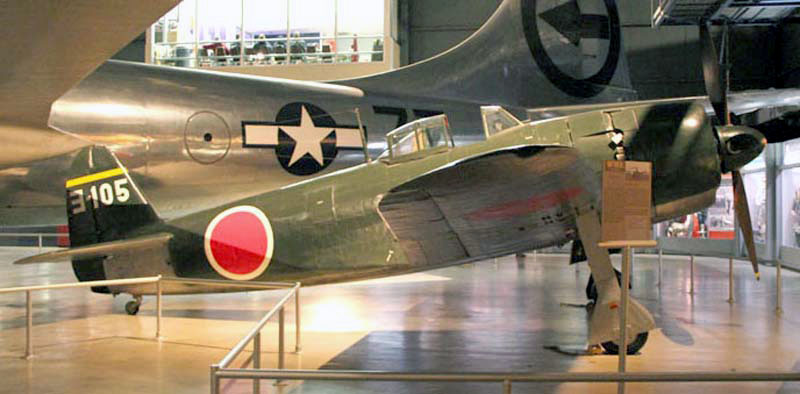|
AIRCRAFT |
|
|
|
|
|
Baika (Plum Blossom)
|
Projected kamikaze aircraft
based on the
Fieseler Fi
103R, not
built |
|
E5K |
1931
three-seat
reconnaissance
floatplane,
Kawanishi-built
version of
Yokosuka
E5Y; 20
built |
|
E7K |
'Alf' 1933
three-seat
reconnaissance
floatplane;
533 built |
|
E8K |
Reconnaissance
floatplane;
lost to
the Nakajima
E8N |
|
E10K |
1934 night
reconnaissance/transport
flying boat;
one built,
but
cancelled in
favor of
the Aichi
E10A;
prototype
converted
into a
transport |
|
E11K |
1937 night
reconnaissance
flying boat;
two built,
but
cancelled in
favor of
the Aichi
E11A |
|
E12K |
|
|
E13K |
1938
three-seat
reconnaissance
floatplane;
two built,
but
cancelled in
favor of
the Aichi
E13A |
|
E15K |
Shiun ('Violet
Cloud') -
'Norm' 1941
reconnaissance
floatplane;
15 built |
|
G9K Gunzan |
Proposed
land-based
heavy bomber
based on the
H8K |
|
H3K |
1930
patrol/training
flying boat;
5 built |
|
H6K -
'Mavis' |
1936 patrol
flying boat
developed
from the
H3K; 215
built |
|
H6K2-L/H6K4-L |
Unarmed
transport
conversions
of H6K |
|
H8K -
'Emily' |
1941 patrol
flying boat;
167 built |
|
H8K1-L/H8K2-L/H8K4-L Seikū (Clear
Sky) |
Transport
conversions
of H8K;
H8K4-L
remained a
project as
all H8K4s
were lost in
1945 |
|
H11K Soukuu (Blue
Sky) |
Transport
flying boat
project;
mockup only |
|
H11K1-L |
Projected
transport
version of
H11K |
|
J3K |
Interceptor
fighter, not
built |
|
J6K Jinpu (Squall) |
Iinterceptor
fighter;
mockup only |
|
K-1 |
1920 mail
plane |
|
K-2 |
1921
single-seat
racer |
|
K-3 |
1921
multipurpose
transport
aircraft
developed
from the K-1 |
|
K-5 |
1922
floatplane
mail plane |
|
K-6 |
1923
three-seat
biplane
airliner |
|
K-7A |
Transport
Seaplane -
1925
six-seat
biplane
floatplane
airliner |
|
K-7B |
Mail-carrying
Aircraft -
mail plane
modification
of K-7A |
|
K-8 |
1926
floatplane
mail plane |
|
K-9 |
Cargo
aircraft
project |
|
K-10
Transport |
1926 mail
plane/six-seat
airliner |
|
K-11 |
1927
carrier-based
fighter |
|
K-12 Sakura |
1928
experimental
long-range
record-breaking
aircraft |
|
K-60 |
Long-range
80 ton
flying boat
project |
|
K-100 |
Twin-engine
land-based
bomber
project |
|
K-200 |
Proposed
turbojet-powered
long-range
flying boat,
not built |
|
K6K |
1938
floatplane
trainer
prototype; 2
built |
|
K8K |
1938
floatplane
trainer; 15
built |
|
KX-3 |
500 ton, 12
engine
flying boat
project |
|
N1K Kyōfū (Gale)-
'Rex' |
1942
floatplane
fighter |
|
N1K1-J Shiden (Violet
Lightning) -
'George' |
1942
land-based
fighter
conversion
of N1K |
|
N1K2-J Shiden-KAI (Violet
Lightning-modified) |
1943
improved
N1K1-J |
|
TB |
Four-engine
heavy bomber
project |

